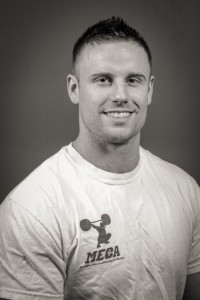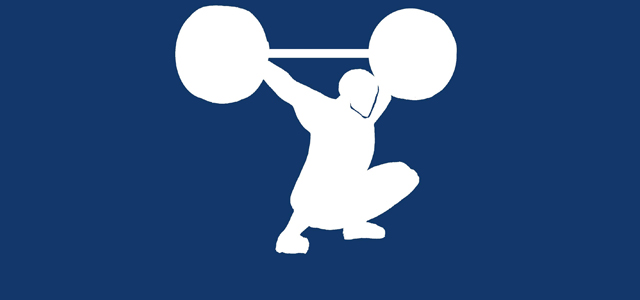Lawrence: Making hockey players faster (Part I)

By David Lawrence –
I have come to the realization in life that I am only good at two things, both of which are extremely important in my job as a strength coach – so I guess you could say I got lucky and choose the right profession. The first is to make athletes faster and the second is getting them to put on tremendous amounts of lean muscle in a very short amount of time. In this article, I will be talking about the former, which isn’t really that difficult. But first, I am going to make a bold statement, so here goes. And this only applies to hockey players who take their training and there game seriously.
“If you’re not getting noticeably faster every season then you’re not doing something right and you need to start doing something different.”
I have always said that hockey players are the best athletes to train and the easiest to get results with. Why? Well for starters they work hard and are generally very tough individuals. That makes my job easy and more fun. Next, they are all jacked up and have so many muscular deficiencies that when they are fixed through good training and put back into “structural balance” improved speed naturally occurs. But we are going to advance beyond that and dive into more advance training specifically designed to improve speed. And to be honest, this isn’t earth-shattering.
With hockey players the low back is the limiting factor in speed 9 out of 10 times. The erector spinae is a very big stabilizer muscle that needs to be incredibly strong if you skate and are looking to improve speed. One of the keys to being fast is the ability to skate low and keep a lower center of gravity. When the body is under fatigue, the first thing to occur when skating is for the low back to rise, thus causing a breaking affect because the athletes center of gravity is now higher. A weak low back will limit power production from a postural stand point because you will have to continuously lower your center of gravity to accelerate and decelerate which will lead to inefficacy’s, destabilization, and ultimately wasted time in beating your opponent to the puck.

At MECA, we directly train the lower back in every single phase of our off-season workouts. In the early phases of strength training called ‘General Preparation’ we do a lot of direct low back work with isometric holds. This tends to bring up strength rather quickly. This would include 45-degree back extension with a five-second hold at the top or a reverse hyper extension with a pause at the most difficult position of the lift. We would also incorporate other movements like Romanian Deadlifts (RDLs) and Seated Goodmornings. These work different ranges in hip extension that are vital to improving strength through the low back. The exercises are a bit slower and more muscularly taxing but provide the right stimulus needed to improve hypertrophy and muscular function. In our ‘Specific Prep’ phases which are closer to the season, we do things like Olympic Lifting, jumps, and throws like the Caber Toss to get the entire posterior chain elict maximal power. When you train with Olympic lifts your low back must first be very strong in order to help produce force, but also absorb the force that is being placed on the structures. I just learned from Ben Prentiss at Prentiss Hockey Performance that Olympic Lifting is the best way to improve acceleration, which is of utmost importance in the game of hockey.
The last thing I will add is that I really believe that the deadlift is the best exercise for most young hockey players to perform. We do the deadlift or some variation in almost every phase of our programs because it is so beneficial. The only problem with the lift is that it has a high risk of injury if not done properly under the supervision from a strength coach. I would highly recommend that you get a qualified strength coach to help you perform these lifts the right way. It will definitely pay off by improving your speed on the ice.
Here is a sample off season workout for the Posterior Chain and the Low Back. I wrote this for a college hockey player who was very weak and at the time, dramatically needed to improve his low back strength.
Phase 1 (4 weeks)
A1. Seated Goodmorning 3 x 15 2011 75
A2. Lying Leg Curl 3 x 7-9 40X1 60
B1. 45° Back Ext. 3 x 10-12 2014 60
B2. Front Step Up 3 x 10-12 2011 60
C1. Sideways Sled Drag 5 set 30 yards
C2. Low Ab Pull Ins 5 sets 15 reps
Phase 2 (4 weeks)
A1. Trap Bar Deadlift 4 x 6-8 4020 90
A2. Kneeling Leg Curl 4 x 6-8 4010 90
B1. 90 Back Ext. 4 x 10-12 2012 60
B2. Forward Sled Drag 4 x 40 yards 60
C1. Standing Calf Raise 3 x 25 reps 30
C2. Neck Ext. Ball 3 x 8 1418 30
Phase 3 (4 weeks)
A1. Snatch off Blocks 5 x 6 10X0 10
A2. Depth Jumps 5 x 5 0000 120
B1. Front Squat w/ Chains 5 x 4-6 6010 120
B2. Glute Ham Raise 5 x 6-8 3111 120
C. Prowler Sprint 8 x 15 yards (75)
This athlete ended up gaining 20 pounds of muscle in 11 weeks and called me the first day he was back on campus to say that his speed improved so much it felt effortless to skate. Gaining 20 pounds and getting faster – that’s what should happen with proper training and the right approach.

